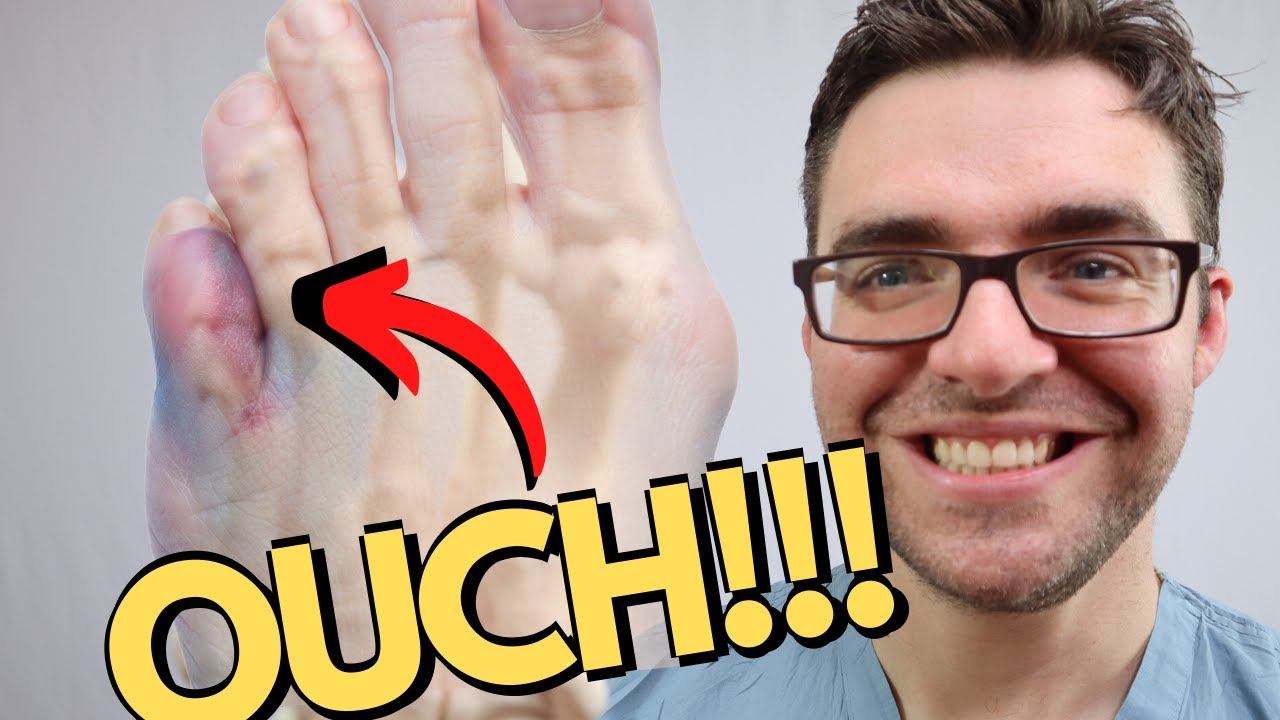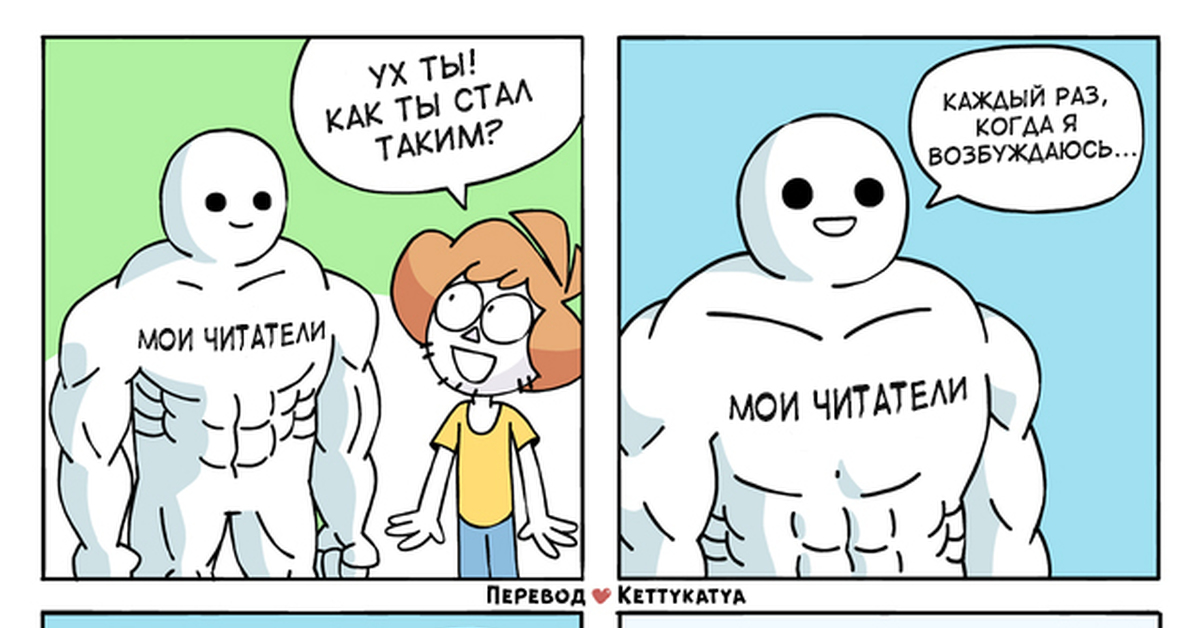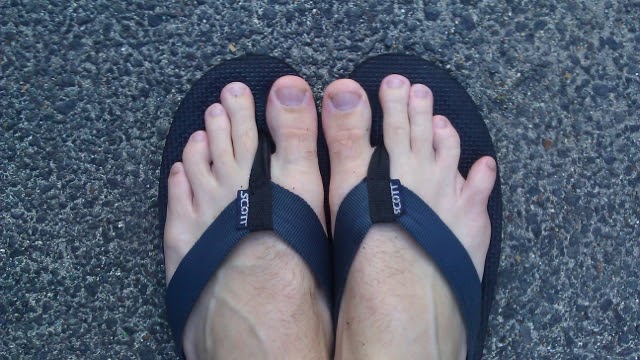How do you know if your little toe is broken. A Comprehensive Guide to Broken Pinky Toes: Symptoms, Causes, and Treatments
Discover the essential facts about broken pinky toes. Learn the common symptoms, potential causes, and effective treatment options for this common injury.
Understanding Broken Pinky Toes
A broken pinky toe, also known as a fractured fifth toe, is a common injury that occurs due to a traumatic impact or blow to the smallest toe. This type of fracture typically happens at the base of the pinky toe, where the bone is most vulnerable. Understanding the symptoms, causes, and management of a broken pinky toe is crucial for prompt and effective treatment.
Symptoms of a Broken Pinky Toe
The most common symptoms associated with a broken pinky toe include:
- A snapping, grinding, or popping noise at the time of the break
- Intense pain at the point of impact where the fracture occurred
- The toe appearing to be crooked or misshapen
- Redness, bruising, and swelling in the affected area
If there is an open wound, it is essential to seek immediate medical attention to prevent the risk of infection.

Other Causes of Toe Pain and Swelling
While a broken pinky toe is a common cause of toe pain and swelling, there are other potential underlying issues that can lead to similar symptoms. Some of these include:
Stress Fractures
A stress fracture, also known as a hairline fracture, is a small crack or severe bruising within the bone. This type of injury is often caused by overuse and repetitive activity, rather than a single traumatic event. Symptoms of a stress fracture may include pain during or after normal activities, pain that goes away with rest but returns when standing or during activity, and tenderness to the touch, but without significant bruising.
Sprains
A sprain occurs when there is damage to the ligaments that connect the bones in the toes. Sprains can range in severity from a mild overstretching of the ligament (Grade I) to a complete tear (Grade III). Symptoms may include pain, swelling, difficulty walking, and tenderness to the touch.
Dislocations
A dislocation is a complete separation of the bones in a joint, causing them to move out of their normal position. This can lead to severe pain, deformity, swelling, bruising, and difficulty moving the affected toe.

Bunions
A bunion is a painful, bony bump that forms on the joint of the big toe, but a similar condition called a tailor’s bunion can also develop on the pinky toe. Symptoms may include a visible bump, pain, tenderness, redness, and inflammation.
Corns
Corns are hardened, thickened areas of skin that form due to friction or pressure. They often develop on the tops and sides of the toes, as well as the balls of the feet, and can cause pain when wearing shoes.
Treatment Options for a Broken Pinky Toe
The treatment for a broken pinky toe will depend on the severity of the injury and the specific symptoms experienced. In many cases, conservative treatments can be effective, including:
- Resting the affected toe
- Applying ice to reduce swelling and pain
- Wearing a protective boot or splint to immobilize the toe
- Taking over-the-counter pain medication, such as ibuprofen or acetaminophen
In more severe cases, or if the fracture is not healing properly, a doctor may recommend additional treatments, such as the use of crutches, buddy taping the affected toe to an adjacent toe, or even surgery to realign the bones and stabilize the fracture.

When to Seek Medical Attention
If you suspect that you have a broken pinky toe, it is important to seek medical attention, especially if you experience severe pain, significant swelling, an open wound, or difficulty walking. A healthcare provider can perform a physical examination, order imaging tests if necessary, and provide appropriate treatment recommendations to ensure proper healing and prevent long-term complications.
Preventing Broken Pinky Toes
While it may not be possible to completely prevent a broken pinky toe, there are some steps you can take to reduce the risk of this injury, such as:
- Wearing well-fitting, protective footwear when engaging in activities that may put your toes at risk
- Being cautious when walking in areas with potential hazards, such as uneven surfaces or objects that could be stubbed
- Maintaining good balance and coordination to minimize the risk of falls or impacts that could lead to a broken toe
By understanding the symptoms, causes, and treatment options for a broken pinky toe, you can take proactive steps to address this common injury and facilitate a swift and successful recovery.

What you should know about a broken pinky toe
Article Featured on MedicalNewsToday
A broken pinky toe is a fracture of the smallest toe. The term “broken toe” usually describes a traumatic fracture, which can occur due to a direct blow or impact, such as stubbing the toe or dropping something on it. The pinky toe is a commonly broken toe, and the fracture usually occurs at its base.
This article looks at the symptoms of a broken small toe, along with some other problems that can cause pain and swelling in the area. It also examines the treatment and management options for this injury.
Symptoms of a broken pinky toe
The most common symptoms of a broken pinky toe include:
- a snapping, grinding, or popping noise at the time of the break
- pain at the place of impact at the time the fracture occurs
- the toe appearing to be crooked
- redness, bruising, and swelling
If there is an open wound, a person should seek immediate medical attention to prevent infection.
Other causes of pain and swelling
Other than a broken pinky toe, there are many reasons a person might have pain or swelling in their smallest toe. People can treat most of these causes at home. However, if home remedies do not seem to be working, it is important to see a doctor, as the issue could turn out to be something more serious.
The following sections outline some other causes of pain and swelling in the pinky toe in more detail.
Stress fracture
A stress fracture, or a hairline fracture, is a small crack or severe bruising within a bone. It is slightly different from a traumatic fracture, as it usually occurs due to overuse and repetitive activity.
Symptoms
- pain during or after performing normal activities
- pain that goes away when resting but returns when standing or during activity
- painful to the touch
- swelling but no bruising
Treatment
According to the American Academy of Orthopaedic Surgeons (AAOS), the most important treatment for a stress fracture is rest.
Advising that it takes up to 8 weeks for most fractures to heal, the AAOS warn against resuming the activity that caused the stress fracture to occur too quickly. They warn that this could lead to long-term problems. As well as resting, using shoe inserts or braces can help stress fractures heal.
Sprains
A sprain occurs when there is damage to a ligament. Ligaments are the bands of tough, elastic connective tissue that connect the bones in the toes to each other.
Symptoms
- pain
- swelling
- difficulty walking
- tender to the touch
The AAOS categorize sprains into three grades:
- Grade I: This is characterized by overstretched ligaments, a minimal loss of function, and mild pain.
- Grade II: This is characterized by a partially torn ligament, moderate pain, and difficulty putting weight on the toe.
- Grade III: This is characterized by a complete tear of the ligament, severe pain, a total loss of function, and an inability to bear weight.

Treatment
Treatment depends on the severity of the sprain but could include:
- resting the toe
- icing the toe
- wearing a compression sock
- using crutches to aid walking
- taking pain relief medication
- using a walking boot, which is a stiff boot that protects the toe as it heals
Dislocation
A dislocation is a complete separation of the bones in a joint. The bones then move out of their normal position.
Symptoms
- severe pain
- deformity or displacement of the toe
- swelling and bruising
- numbness or tingling
- difficulty moving the toe
Treatment
- “buddy” taping it to an adjacent toe
- using a splint
- wearing a cast
- trying a walking boot
Bunion
A bunion is a painful, bony bump on the toe joint. A bunion on the pinky toe is called a tailor’s bunion. Historically, this name comes from the tailors who sat cross-legged all day, with the outside edge of their feet rubbing on hard surfaces.
Symptoms
- a visible bump on the outside of the pinky toe
- pain and tenderness at the site of the bump
- redness and inflammation
- a callus or corn on the bump
Treatment
- making shoe modifications, such as wearing wider-fitting footwear
- using bunionette pads
- taking nonsteroidal anti-inflammatory drugs (NSAIDs), such as ibuprofen
In some cases, corticosteroid injections can help treat the inflamed tissue around the joint. Surgery may be necessary in severe cases.
Corns
Corns are hard, thickened areas of skin that form as a result of friction or pressure. Corns are the foot’s natural defense to help protect the skin underneath them. They are a response to bone pressure against the skin.
Corns may develop on the tops and sides of the toes and on the balls of the feet.
Symptoms
- a hardened patch of skin
- open sores between the toes
- pain when wearing shoes
Treatment
- shaving the corn, but only when a health professional carries it out
- soaking the feet and using a pumice stone on the corn
- wearing a donut shaped foam pad over the corn to reduce the pressure
It is best to visit a doctor as soon as someone suspects that there is something wrong. This is particularly important if a person hears a snapping, grinding, or popping noise at the time of the break.
This is particularly important if a person hears a snapping, grinding, or popping noise at the time of the break.
If a person leaves a broken toe untreated, it can get worse and cause lasting problems.
Diagnosing a broken pinky toe
The doctor will examine the foot, gently pressing on different areas to find out where there is pain. They will also order X-rays. Additional imaging studies may be necessary if the initial X-ray does not show anything.
Treatment
It is a myth that nothing can mend broken toes. In fact, leaving them without treatment can lead to future complications. Healing of a broken toe may take 6–8 weeks.
A person may need to have their broken toe buddy taped to an adjacent one. Wearing a stiff-soled shoe can also help, as can using crutches to help keep weight off of the toe while it heals.
Rarely, a person may need to wear a cast to keep the foot immobile. Surgery may be necessary if there are multiple breaks or if nonsurgical treatment does not work. Also, if a fracture leads to large amounts of blood underneath the nail, a person may need to take antibiotics and undergo nail removal.
Also, if a fracture leads to large amounts of blood underneath the nail, a person may need to take antibiotics and undergo nail removal.
Orthopedic & Sports Medicine Center of Oregon is an award-winning, board-certified orthopedic group located in downtown Portland Oregon. We utilize both surgical and nonsurgical means to treat musculoskeletal trauma, spine diseases, sports injuries, degenerative diseases, infections, tumors and congenital disorders.
Our mission is to return our patients back to pain-free mobility and full strength as quickly and painlessly as possible using both surgical and non-surgical orthopedic procedures.
Our expert physicians provide leading-edge, comprehensive care in the diagnosis and treatment of orthopedic conditions, including total joint replacement and sports medicine. We apply the latest state-of-the-art techniques in order to return our patients to their active lifestyle.
If you’re looking for compassionate, expert orthopedic surgeons in Portland Oregon, contact OSM today.
Phone:
503-224-8399
Address
1515 NW 18th Ave, 3rd Floor
Portland, OR 97209
Hours
Monday–Friday
8:00am – 4:30pm
Symptoms, treatment, and other conditions
A person can break their pinky toe in a trauma, such as stubbing the toe or dropping something on it. They may hear a sound as the toe breaks and feel pain. The toe may be crooked, swollen, and bruised.
The pinky toe is a commonly broken toe, and the fracture usually occurs at its base.
This article looks at the symptoms of a broken small toe, along with some other problems that can cause pain and swelling in the area. It also examines the treatment and management options for this injury.
The most common symptoms of a broken pinky toe include:
- a snapping, grinding, or popping noise at the time of the break
- pain at the place of impact at the time the fracture occurs
- the toe appearing to be crooked
- bruising and swelling
If there is an open wound, a person should seek immediate medical attention to prevent infection.
Other than a broken pinky toe, there are many reasons a person might have pain or swelling in their smallest toe.
People can treat most of these causes at home. However, if home remedies do not seem to be working, it is important to see a doctor, as the issue could turn out to be something more serious.
The following sections outline some other causes of pain and swelling in the pinky toe in more detail.
Stress fracture
A stress fracture, or a hairline fracture, is a small crack or severe bruising within a bone.
It is slightly different from a traumatic fracture, as it usually occurs due to overuse and repetitive activity.
Symptoms
- pain during or after performing normal activities
- pain that goes away when resting but returns when standing or during activity
- painful to the touch
- swelling but no bruising
Treatment
According to the American Academy of Orthopaedic Surgeons (AAOS), the most important treatment for a stress fracture is rest.
Advising that it takes up to 8 weeks for most fractures to heal, the AAOS warn against resuming the activity that caused the stress fracture to occur too quickly. They warn that this could lead to long-term problems.
As well as resting, using shoe inserts or braces can help stress fractures heal.
Learn more about stress fractures here.
Sprains
A sprain occurs when there is damage to a ligament. Ligaments are the bands of tough, elastic connective tissue that connect the bones in the toes to each other.
Symptoms
- pain
- swelling
- difficulty walking
- tender to the touch
The AAOS categorize sprains into three grades:
- Grade I: This is characterized by overstretched ligaments, a minimal loss of function, and mild pain.
- Grade II: This is characterized by a partially torn ligament, moderate pain, and difficulty putting weight on the toe.
- Grade III: This is characterized by a complete tear of the ligament, severe pain, a total loss of function, and an inability to bear weight.

Treatment
Treatment depends on the severity of the sprain but could include:
- resting the toe
- icing the toe
- wearing a compression sock
- using crutches to aid walking
- taking pain relief medication
- using a walking boot, which is a stiff boot that protects the toe as it heals
Learn about the difference between a sprain and a strain here.
Dislocation
A dislocation is a complete separation of the bones in a joint. The bones then move out of their normal position.
Symptoms
- severe pain
- deformity or displacement of the toe
- swelling and bruising
- numbness or tingling
- difficulty moving the toe
Treatment
- “buddy” taping it to an adjacent toe
- using a splint
- wearing a cast
- trying a walking boot
Bunion
A bunion is a painful, bony bump on the toe joint.
A bunion on the pinky toe is called a tailor’s bunion. Historically, this name comes from the tailors who sat cross-legged all day, with the outside edge of their feet rubbing on hard surfaces.
Historically, this name comes from the tailors who sat cross-legged all day, with the outside edge of their feet rubbing on hard surfaces.
Symptoms
- a visible bump on the outside of the pinky toe
- pain and tenderness at the site of the bump
- redness and inflammation
- a callus or corn on the bump
Treatment
- making shoe modifications, such as wearing wider-fitting footwear
- using bunionette pads
- taking nonsteroidal anti-inflammatory drugs (NSAIDs), such as ibuprofen
In some cases, corticosteroid injections can help treat the inflamed tissue around the joint. Surgery may be necessary in severe cases.
Learn more about tailor’s bunions here.
Corns
Corns are hard, thickened areas of skin that form as a result of friction or pressure. Corns are the foot’s natural defense to help protect the skin underneath them. They are a response to bone pressure against the skin.
Corns may develop on the tops and sides of the toes and on the balls of the feet.
Symptoms
- a hardened patch of skin
- open sores between the toes
- pain when wearing shoes
Treatment
- shaving the corn, but only when a health professional carries it out
- soaking the feet and using a pumice stone on the corn
- wearing a donut shaped foam pad over the corn to reduce the pressure
Learn more about corn remedies here.
It is best to visit a doctor as soon as someone suspects that there is something wrong. This is particularly important if a person hears a snapping, grinding, or popping noise at the time of the break.
If a person leaves a broken toe untreated, it can get worse and cause lasting problems.
The doctor will examine the foot, gently pressing on different areas to find out where there is pain.
They will also order X-rays. Additional imaging studies may be necessary if the initial X-ray does not show anything.
It is a myth that nothing can mend broken toes. In fact, leaving them without treatment can lead to future complications.
In fact, leaving them without treatment can lead to future complications.
Healing of a broken toe may take 6–8 weeks.
A person may need to have their broken toe buddy taped to an adjacent one. Wearing a stiff-soled shoe can also help, as can using crutches to help keep weight off of the toe while it heals.
Rarely, a person may need to wear a cast to keep the foot immobile.
Surgery may be necessary if there are multiple breaks or if nonsurgical treatment does not work.
Also, if a fracture leads to large amounts of blood underneath the nail, a person may need to take antibiotics and undergo nail removal.
Taking NSAIDs such as aspirin and ibuprofen can help decrease swelling and pain.
At home, people can use the RICE method to try to reduce swelling and allow the pinky toe to heal.
RICE
- Rest: Give the toe time to heal.
- Ice: Ice the toe for up to 20 minutes four times per day.
- Compression: Using an elastic bandage or brace can provide support and reduce swelling.

- Elevate: Elevating the foot above the heart can also help reduce swelling.
Learn more about the RICE method here.
The pinky toe works with the rest of the toes to keep a person balanced. A person’s foot works in a tripod fashion to keep them balanced, with the little toe being one part, the big toe another, and the heel the third.
Sustaining damage to any part of this tripod can affect a person’s range of motion.
Learn more about the bones of the feet here.
It might be small, but the pinky toe plays a vital role in keeping a person balanced. Therefore, any damage to it can cause issues.
It is important to seek medical attention if a person suspects a broken toe, as it can get worse without treatment.
A person can treat milder problems at home, by changing their footwear, taking NSAIDs, and resting. A medical team can treat more serious issues.
How to tell if a finger is broken
Likbez
Health
June 20, 2022
Focus on the symptoms, but don’t delay your visit to the doctor.
Iya Zorina
Author of Lifehacker, athlete, CCM
You can listen to the short version of the article. If it’s more convenient for you, turn on the podcast.
What can lead to a broken finger
The thumbs and toes have two phalanges, and all the others have three. Any of these bones can break. For example, from falling a heavy object, being pinched by a door, or hitting the edge of a nightstand. It is not necessary to drop a weight on your foot or hit your finger with a hammer – even an unsuccessful landing when jumping from a height can lead to a fracture.
The likelihood of breaking bones increases with certain diseases and bad habits. Among the increased risk factors:
- cancer;
- type 1 diabetes;
- celiac disease;
- Crohn’s disease;
- ulcerative colitis;
- rheumatoid arthritis;
- osteoporosis;
- calcium deficiency;
- excessive consumption of alcohol;
- smoking;
- taking corticosteroids – anti-inflammatory drugs.

How to tell if a finger is broken
The most obvious sign that can indicate a fracture is severe and throbbing pain that increases with movement of the injured finger and does not subside with time.
Other common symptoms include:
- change in the shape of the finger or its position relative to others;
- hematoma, which may involve a broken toe, spread to others, and extend into the foot or hand;
- numbness;
- flexion problems;
- edema;
- if we are talking about the leg – the inability to transfer body weight to the injured limb.
In this case, the person will not necessarily lose the ability to move the finger, and the resulting pain may seem tolerable. If the injured limb has not changed its position and shape, without radiography it will not be possible to distinguish a fracture from a severe bruise.
Therefore, if pain and swelling persist for 1-2 days, be sure to visit a traumatologist. The sooner treatment begins, the greater the chance that the bones will grow together correctly and there will be no problems with the mobility of the finger.
The sooner treatment begins, the greater the chance that the bones will grow together correctly and there will be no problems with the mobility of the finger.
Do’s and don’ts before seeing a doctor
Before you see a traumatologist, immobilize your injured finger if possible. If the fracture is on the leg, take off your shoes, lie down and place the limb above the level of the head. This will ensure the outflow of blood and reduce pain and swelling.
An ice pack can also be applied for local anesthesia for 15-20 minutes. But keep in mind that this procedure only helps to relieve symptoms and does not promote healing. While waiting for a trip to the emergency room, you can also take an anesthetic pill.
If your toe is injured, do not go to the hospital on foot, as this may dislodge the broken bones. In addition, do not try to immobilize the finger yourself, for example, by wrapping it with a band-aid or sports tape to the next one. This can cause tension and displacement of bone fragments, which will only exacerbate the problem.
What happens if you don’t see a doctor
In some cases, surgery is necessary to heal the fracture properly. For example, if:
- damaged joint;
- a piece of bone to which the tendon was attached was torn off;
- the bone is shattered into several fragments;
- damaged ligaments or tendons;
- bone fragments are unstable and cannot be securely fixed with a bandage.
Because you can’t tell what type of fracture you have by eye, not seeing a doctor increases your risk of malunion and loss of joint function.
Consequences of malunion of the bone. Photo: Iya Zorina
As a result, the finger may look crooked (as in the photo above) and either not bend at all, or do it not in full range.
Read also 🦶🤙🚑
- 25 myths about injuries that are curious to know only in theory
- What threatens a penis fracture and how to treat it
- How to recognize an arm fracture and what to do next
- Hip fracture: how to recognize it, how to treat it and how long it will take to recover
- How to recognize a sprain and what to do about it
symptoms, treatment, prevention at home
The Internet is full of jokes about the insidious legs of the sofa and bedside tables, which dream of meeting the little toe. Many remember the pain that happens after their sharp contact. But few then rush to the doctor. A broken toe is often seen as comical. As a result, a person looks at whether the finger is moving or not, it hurts – it doesn’t hurt, and lives on calmly. Even if the finger swells the next day, many rely on “it will pass by itself.” In some cases, this is what happens. But sometimes the severity of the situation can exceed the insignificance of external symptoms, especially since not only the little finger can be broken on the leg.
Many remember the pain that happens after their sharp contact. But few then rush to the doctor. A broken toe is often seen as comical. As a result, a person looks at whether the finger is moving or not, it hurts – it doesn’t hurt, and lives on calmly. Even if the finger swells the next day, many rely on “it will pass by itself.” In some cases, this is what happens. But sometimes the severity of the situation can exceed the insignificance of external symptoms, especially since not only the little finger can be broken on the leg.
– The big toe or little toe is most commonly affected by toe fractures, says traumatologist Erwin Kuzmin . “People hit furniture – these are common cases when, for example, a young mother ran after a child and got injured. Either the person was in a hurry to the TV, the children frolicked next to the pieces of furniture. In these cases, the little fingers are more often injured. In my practice, there was a treatment with a broken toe as a result of a Rottweiler jumping on the mistress – the dog made a maneuver out of the best of feelings, as a result, the woman had a fracture of her little finger. Big toes are injured mainly when playing football, participating in outdoor sports, accidentally or intentionally kicking a hard surface. You can also get a broken toe if a heavy angular object falls from above. As an example, I can cite a schoolboy whose briefcase with textbooks fell on his leg. Severe injuries, for example, resulting from an accident, are not taken into account, since there we are talking, most often, about a combined injury and saving the patient’s life, and not a broken toe.
Big toes are injured mainly when playing football, participating in outdoor sports, accidentally or intentionally kicking a hard surface. You can also get a broken toe if a heavy angular object falls from above. As an example, I can cite a schoolboy whose briefcase with textbooks fell on his leg. Severe injuries, for example, resulting from an accident, are not taken into account, since there we are talking, most often, about a combined injury and saving the patient’s life, and not a broken toe.
Symptoms of a broken toe
Three main symptoms:
- pain;
- edema;
- deformation.
Pain. The first and main sign of a broken toe is pain. The pain syndrome also occurs with bruises and dislocations, therefore, first of all, it is worth paying attention to its intensity. Constant throbbing pain in the finger, especially at night, is a sure reason to go to the emergency room.
Edema. When a toe is broken, swelling appears along with pain, in other words, swelling. As a result of injury, the integrity of body tissues, vascular permeability and water-salt balance are violated, as a result, an excess of fluid accumulates in the intercellular space, which we observe visually. Small blood vessels are also damaged, and a hematoma joins the edema, i.e. bruise. When you try to move your finger, swelling and hematoma can increase, as well as spread to neighboring tissues.
When a toe is broken, swelling appears along with pain, in other words, swelling. As a result of injury, the integrity of body tissues, vascular permeability and water-salt balance are violated, as a result, an excess of fluid accumulates in the intercellular space, which we observe visually. Small blood vessels are also damaged, and a hematoma joins the edema, i.e. bruise. When you try to move your finger, swelling and hematoma can increase, as well as spread to neighboring tissues.
Deformation . A clear sign of a broken toe is its curvature. Most often, in such a situation, it is impossible to move them, and an attempt to touch causes a sharp pain. However, it should be borne in mind that with significant edema, the deformation may not be visible to the eye, so it is better to consult a doctor to make a diagnosis.
Treatment of a fractured toe
Fractures are different – open and closed, with and without displacement of fragments, oblique, transverse, comminuted, and so on. Treatment of a fracture depends on its type. If this is a simple fracture without displacement, then a universal remedy is the imposition of a splint for short-term immobilization of the limb. After two weeks, it will be possible to step on the leg, after three – to remove the splint.
Treatment of a fracture depends on its type. If this is a simple fracture without displacement, then a universal remedy is the imposition of a splint for short-term immobilization of the limb. After two weeks, it will be possible to step on the leg, after three – to remove the splint.
Doctors used to recommend tight bandaging for several weeks, especially for injuries to the middle and ring fingers. It was necessary to apply a tourniquet, connecting the injured finger with the neighboring uninjured one, and tightly tie them. Bandage every 3-4 days. But, the main rule in the treatment of a broken toe is that patients should not lean on the injured leg.
– Most patients consider a broken toe a trifle and neglect the orthopedic regimen, comments Erwin Kuzmin. – As a result, the consolidation of bone fragments is delayed, the fracture becomes ununited. Treatment is delayed. Therefore, it is much more practical to temporarily walk with a splint and enjoy life. After all, other types of toe fractures require more serious intervention – surgery.
After all, other types of toe fractures require more serious intervention – surgery.
Diagnosis
The main method for diagnosing a broken toe is radiography. It will allow you to immediately differentiate the diagnosis: bruise or fracture, as well as determine the type of fracture.
The main thing in the healing process is to observe the orthopedic regimen. Photo: Pixabay
Modern methods of treatment
Modern medicine has especially advanced in the treatment of complex fractures. First of all, this concerns the treatment of comminuted fractures of the toes, where fixation of bone fragments is necessary using special structures: knitting needles or plates.
Today, there are many options for plates for periosteal osteosynthesis, with which you can fix any bone. Plates vary in size, shape, functionality. If we are talking about a fracture of the toe, then it is installed for 3-4 weeks and guarantees 100% fixation. Subsequently, it can be both removed and, if indicated, left. However, there is always the risk of a suppurative process.
Subsequently, it can be both removed and, if indicated, left. However, there is always the risk of a suppurative process.
Kirschner wires mainly fix small bones and joints. Fixation can be carried out both externally, when the end of the pin rises above the surface, and internally, when the entire structure is under the skin. Immobilization lasts, as a rule, for 4 to 6 weeks after the operation. The operation is minimally invasive, less traumatic than the installation of plates. Subsequently, you can remove the spokes at any emergency room.
Prevention of a broken toe at home
Broken toes are usually the result of hitting something hard and immovable, or from dropping a heavy, angular object on the foot. Less often – from bending the fingers inward. Therefore, pay attention when buying furniture to its protruding parts. Do not arrange furniture so that it is in your path or aisle. It is advisable to walk around the house in slippers that can soften the blow. Be careful when lifting heavy objects. Also pay attention to the selection of shoes: wearing shoes that are narrow or smaller than necessary in size is fraught with injuries on the street, especially on ice.
Be careful when lifting heavy objects. Also pay attention to the selection of shoes: wearing shoes that are narrow or smaller than necessary in size is fraught with injuries on the street, especially on ice.
Frequently Asked Questions
Why go to the doctor with a broken toe if it heals on its own?
Indeed, the bone can heal itself if it is a simple fracture. Only in the absence of treatment, an incorrectly fused toe can partially lose its mobility and remain deformed. This will make wearing shoes uncomfortable, can cause pain, and in the future threatens with arthritis.
In other cases, if the fracture is complicated, such connivance is fraught with inflammation and amputation.
Do you need a cast for broken toes?
If only the toes are fractured, a splint is applied – a light circular plaster bandage. It does not cover the whole leg, it can be removed at any time for examination or hygiene procedures with the permission of a doctor.
Need a splint after finger surgery?
If a broken toe required surgery, a splint is often placed after surgery for up to two weeks.




